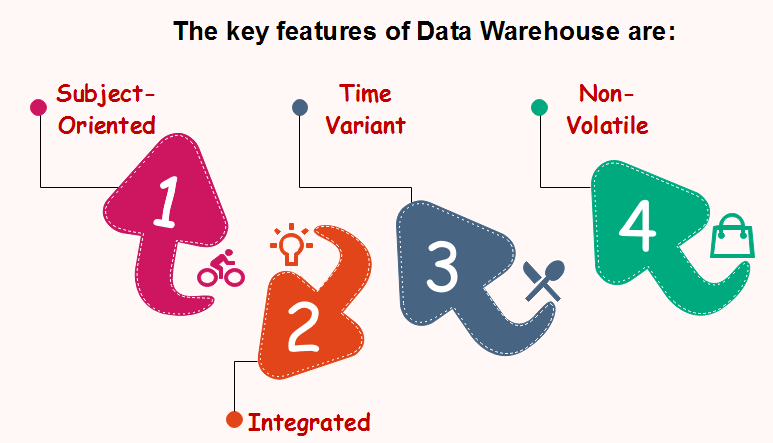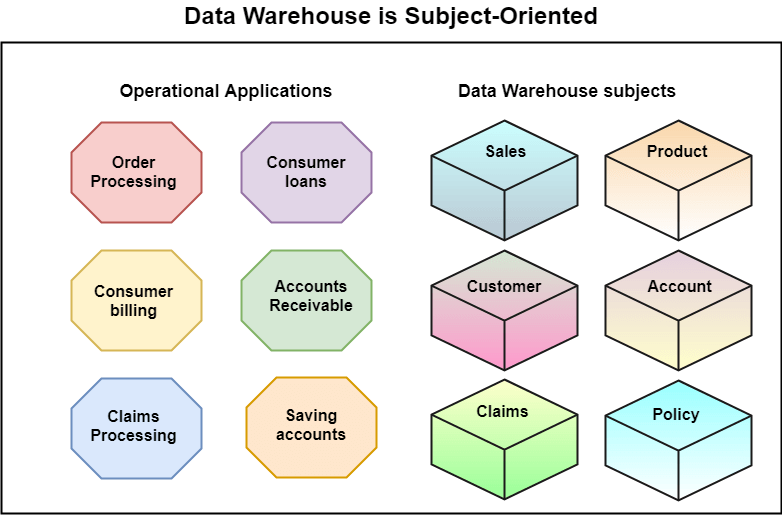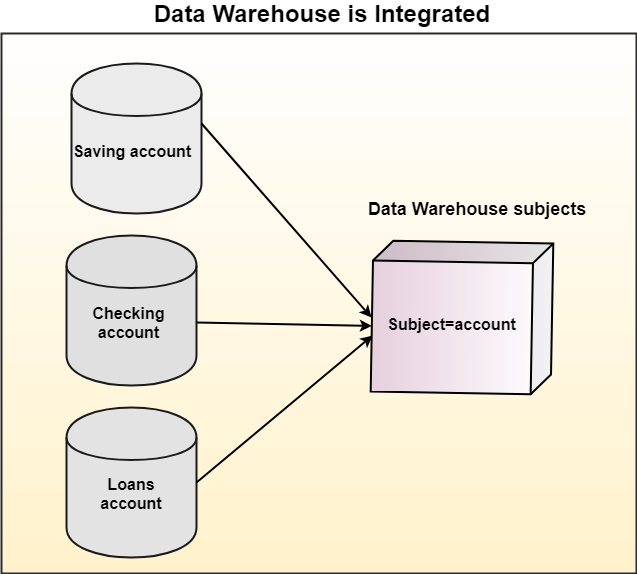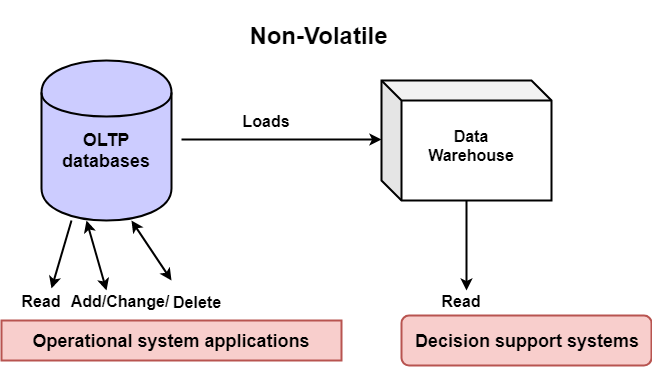Data Warehouse
Data Warehouse training in Vizag
A relational database management system (RDBMS) called a data warehouse was created to satisfy the needs of transaction processing systems. Any centralized data repository that may be accessed for business purposes can be broadly characterized as such. It is a database that holds data intended to fulfill demands for decision-making. This collection of decision-supporting tools is designed to help knowledge workers—managers, analysts, and executives—make better, more intelligent judgments. Business executives can thus employ data warehousing support architectures and tools to methodically arrange, comprehend, and use their information to make strategic decisions.
An online analytical processing (OLAP) engine, customer analysis tools, an extraction, transportation, and loading (ETL) solution, and other applications manage the process of obtaining information and delivering it to business users inside a data warehouse environment.
What is a Data Warehouse?
A relational database intended more for query and analysis than for transaction processing is called a data warehouse (DW). It contains transaction data from both single and many sources as well as historical data.
A data warehouse supports decision-makers with data modeling and analysis by offering integrated, enterprise-wide historical data.
A data warehouse is a collection of information unique to the entire company, not just a subset of its users.
It is employed for decision-making rather than routine tasks and transaction processing.
The following characteristics of a data system can be applied to a data warehouse
- It is a database designed for investigative tasks, using data from various applications.
- It supports a relatively small number of clients with relatively long interactions.
- It includes current and historical data to provide a historical perspective of information.
- Its usage is read-intensive.
- It contains a few large tables.
"Data Warehouse is a subject-oriented, integrated, and time-variant store of information in support of management's decisions."
Data Warehouse training in Vizag
Characteristics of Data Warehouse

Subject-Oriented
A data warehouse's focus is on decision-makers' data modeling and analysis. Because of this, data warehouses usually offer a clear and comprehensive perspective on a certain topic, such customers, products, or sales, rather than the continuous activities of the multinational corporation. This is accomplished by removing information that is unhelpful to the topic and including all information required for users to comprehend the topic.

Integrated
A data warehouse integrates various heterogeneous data sources like RDBMS, flat files, and online transaction records. It requires performing data cleaning and integration during data warehousing to ensure consistency in naming conventions, attributes types, etc., among different data sources.

Time-Variant
A data warehouse stores past information. For instance, files from the past three, six, or twelve months can be retrieved from a data warehouse, as well as older data. These differences with a transactional system, which frequently saves only the most recent file.
Non-Volatile
The data warehouse is a physically distinct data storage location that has been converted from the operational source RDBMS. The data warehouse does not execute update, insert, or delete operations, which are operational updates of data. The initial loading of data and data access are typically the only two steps needed in the data accessing process. As a result, the DW can get data much more quickly because it does not require transaction processing, recovery, or concurrent capabilities. Non-Volatile indicates that data shouldn't change once it's in the warehouse.

Data Warehouse training in Vizag
History of Data Warehouse
The idea of data warehousing came to the late 1980's when IBM researchers Barry Devlin and Paul Murphy established the "Business Data Warehouse."
In essence, the data warehousing idea was planned to support an architectural model for the flow of information from the operational system to decisional support environments. The concept attempt to address the various problems associated with the flow, mainly the high costs associated with it.
In the absence of data warehousing architecture, a vast amount of space was required to support multiple decision support environments. In large corporations, it was ordinary for various decision support environments to operate independently.
Goals of Data Warehousing
- To help reporting as well as analysis
- Maintain the organization's historical information
- Be the foundation for decision making.


















0 Comments
If you have any doubts,please let me know